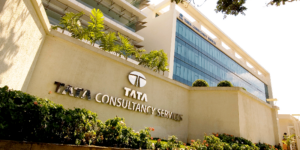In a country known for its vibrant democracy and robust economy, South Korea’s decision to impose martial law on December 3, 2024, sent shockwaves through its population and the international community. The decision, however brief, underscores the complex interplay of political power, civil liberties, and public reaction in the face of national crises. Let’s dive into the details of what happened, why it happened, and what this means for South Korea moving forward.
Understanding Martial Law
Martial law is an extraordinary measure, often seen as a last resort. It replaces civilian governance with military control during times of emergency, such as war, rebellion, or major unrest. Historically, martial law involves:
- Suspension of Civil Liberties: Movement restrictions, curfews, and suspension of the right to assembly.
- Military Oversight: Direct control of the media, businesses, and public institutions.
- Legal Adjustments: Civilian courts replaced with military tribunals.
South Korea has a fraught history with martial law. It was last enacted during the military dictatorship of Chun Doo-hwan in 1980, amid mass pro-democracy protests in Gwangju. The decision to implement it again in 2024 marks a significant and controversial deviation from the country’s democratic principles.
What Triggered the 2024 Martial Law?
The Official Reason
President Yoon Suk Yeol justified the declaration by claiming that opposition forces were conspiring with pro-North Koreans in the South sympathisers to destabilise the country. According to government sources, the alleged threat included:
- Coordinated Strikes: Strikes by professionals like doctors, who were demanding better working conditions.
- Protests and Rallies: Large-scale demonstrations by opposition parties calling for policy changes.
- Cyber Threats: Reports of increased cyber attacks allegedly traced back to North Korea.
The administration described the situation as a “threat to national security and public order,” prompting the imposition of martial law.
Critics’ Perspective
Opposition leaders and civil rights organisations dismissed these claims as overblown. Many argued that the martial law declaration was a desperate attempt to suppress conflict and consolidate power. They pointed to the President’s weakening popularity—polls showed his approval rating at a mere 22%—as a possible motive for the drastic measure.
What Happened Under Martial Law?
The implementation of martial law was swift and far-reaching. Within hours, the following measures were enacted:
- Ban on Protests: Public gatherings and rallies were prohibited, and police dispersed ongoing demonstrations.
- Media Censorship: News outlets faced restrictions on reporting critical of the government.
- Curfews Imposed: Citizens were required to remain indoors during designated hours.
- Mandatory Work Orders: Striking workers, including doctors and transport operators, were compelled to return to work.
Military vehicles patrolled major cities like Seoul and Busan, and armed personnel were deployed near government institutions.
The Immediate Fallout
Public Backlash
The martial law declaration ignited mass protests instead of quelling unrest. In Seoul, thousands gathered near the National Assembly despite the ban on public gatherings. Protestors carried banners that read “Democracy Over Dictatorship” and chanted slogans demanding President Yoon’s resignation.
Political Rebellion
The backlash was not limited to the streets. In an unprecedented move, South Korea’s National Assembly summoned an emergency session. Despite the military’s presence outside the building, lawmakers voted overwhelmingly to revoke martial law. Of the 300 members, 190—including members of the President’s party—supported the resolution to lift the decree.
International Reactions
South Korea’s allies expressed concern over the sudden imposition of martial law:
- United States: Issued a statement urging South Korea to “uphold democratic principles and human rights.”
- European Union: Called the development “alarming,” with several member states questioning the necessity of such extreme measures.
- Japan: Highlighted the economic ripple effects, given the interconnectedness of Asian markets.
Foreign embassies in Seoul advised their citizens to avoid crowded areas and monitor updates closely.
Martial Law Revoked
Facing overwhelming resistance, President Yoon called a cabinet meeting just six hours after the declaration. The martial law was revoked, marking one of the shortest implementations in history. However, the damage—political, economic, and reputational—was already done.
Political Fallout
The aftermath of the martial law episode has led to a deeper political crisis:
- Impeachment Motions: Opposition parties filed for President Yoon’s impeachment, citing abuse of power.
- Public Discontent: Approval ratings for Yoon dropped further to a historic low of 15%.
- Calls for Resignation: Civic groups and opposition leaders demanded the President step down immediately.
- Legislative Reforms: Lawmakers began drafting bills to limit the executive’s power to declare martial law in the future.
What Does This Mean for South Korea?
The 2024 martial law debacle raises important questions about the balance of power in South Korea:
- Democratic Resilience: The swift response from lawmakers and the public highlighted the strength of South Korea’s democratic institutions.
- Civil Liberties: The episode served as a reminder of how fragile civil liberties can be during perceived crises.
- Economic Stability: The economic repercussions emphasise the interconnectedness of politics and markets in a globalised world.
In a year when “democracy versus dictatorship” has become a trending topic globally, South Korea’s experience serves as a critical case study. And as the dust settles, one thing is clear: the people’s voice remains the ultimate safeguard of democracy, even when faced with the most draconian of measures.










![Read more about the article [Funding alert] B2B marketplace Yojak raises $3.8M in pre-series A round led by Info Edge Ventures](https://blog.digitalsevaa.com/wp-content/uploads/2021/08/Image8qfr-1629174884925-300x150.jpg)